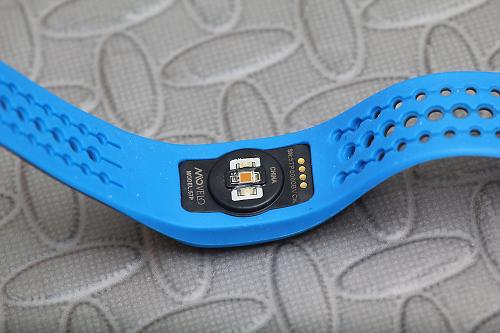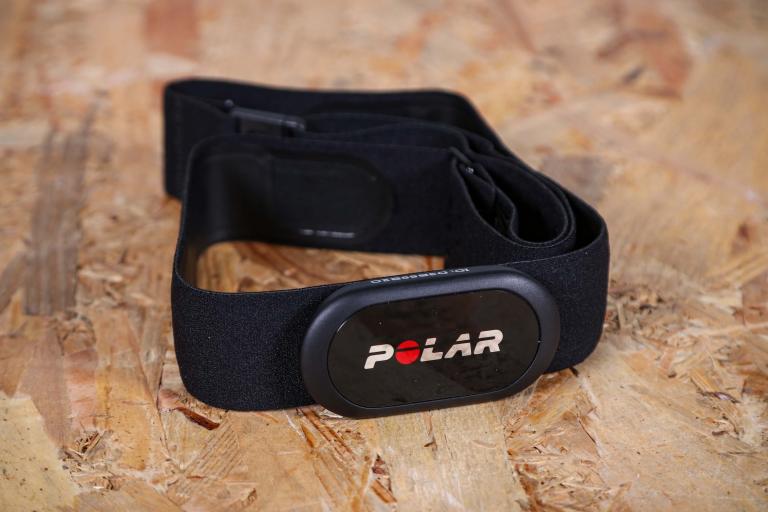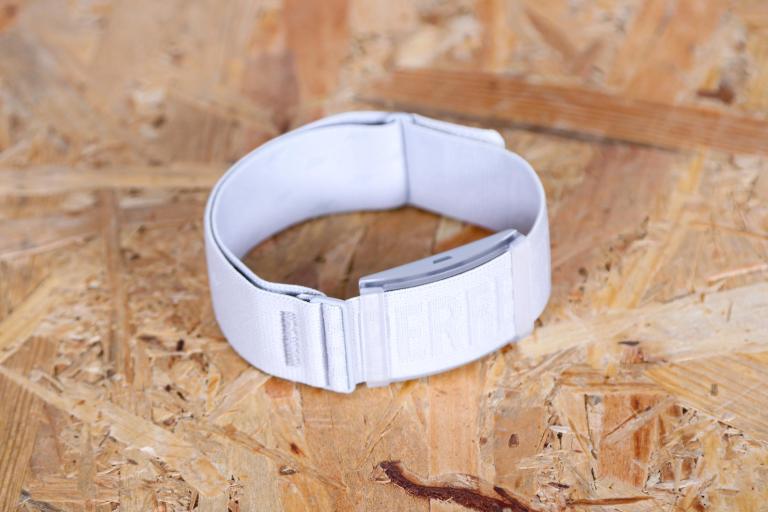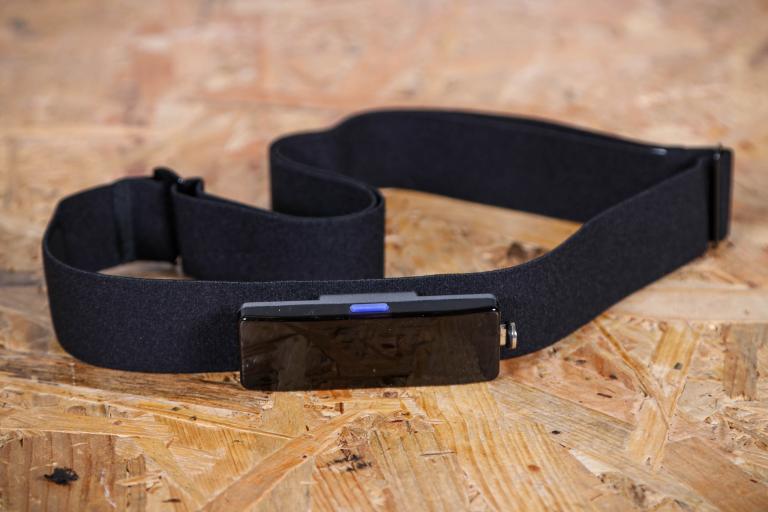- News
- Reviews
- Bikes
- Accessories
- Accessories - misc
- Computer mounts
- Bags
- Bar ends
- Bike bags & cases
- Bottle cages
- Bottles
- Cameras
- Car racks
- Child seats
- Computers
- Glasses
- GPS units
- Helmets
- Lights - front
- Lights - rear
- Lights - sets
- Locks
- Mirrors
- Mudguards
- Racks
- Pumps & CO2 inflators
- Puncture kits
- Reflectives
- Smart watches
- Stands and racks
- Trailers
- Clothing
- Components
- Bar tape & grips
- Bottom brackets
- Brake & gear cables
- Brake & STI levers
- Brake pads & spares
- Brakes
- Cassettes & freewheels
- Chains
- Chainsets & chainrings
- Derailleurs - front
- Derailleurs - rear
- Forks
- Gear levers & shifters
- Groupsets
- Handlebars & extensions
- Headsets
- Hubs
- Inner tubes
- Pedals
- Quick releases & skewers
- Saddles
- Seatposts
- Stems
- Wheels
- Tyres
- Health, fitness and nutrition
- Tools and workshop
- Miscellaneous
- Buyers Guides
- Features
- Forum
- Recommends
- Podcast
review
£109.90
VERDICT:
Wrist-mounted heart rate monitor that can read ANT+ devices and send data to your smartphone via Bluetooth
Weight:
35g
Contact:
At road.cc every product is thoroughly tested for as long as it takes to get a proper insight into how well it works. Our reviewers are experienced cyclists that we trust to be objective. While we strive to ensure that opinions expressed are backed up by facts, reviews are by their nature an informed opinion, not a definitive verdict. We don't intentionally try to break anything (except locks) but we do try to look for weak points in any design. The overall score is not just an average of the other scores: it reflects both a product's function and value – with value determined by how a product compares with items of similar spec, quality, and price.
What the road.cc scores meanGood scores are more common than bad, because fortunately good products are more common than bad.
- Exceptional
- Excellent
- Very Good
- Good
- Quite good
- Average
- Not so good
- Poor
- Bad
- Appalling
The Mio Velo measures your heart rate from your wrist and sends it to other devices via both Bluetooth Smart 4.0 and ANT+. It can also take data from other ANT+ devices – a speed and cadence sensor, for example – and re-transmit it using Bluetooth Smart, allowing you to link ANT+ sensors to a non-ANT+ smartphone.
The Mio Velo comprises a silicone strap containing a 46mm x 25mm x 10mm working unit. Ours weighed just 35g. It takes your heart rate via LEDs and an 'electro-optical cell' that monitors the volume of blood under your skin. Mio boast a 0.99 correlation to electrocardiogram in laboratory testing. In other words, they claim that it is highly accurate.

You strap the Mio Velo around your wrist (it fits wrists from 15cm to 21cm in circumference), just higher than where your watch is or would be. A flashing light lets you know that it's picking up your pulse. I've had no problems with getting the Velo to read and transmit heart rate. I found it as straightforward to use as a regular chest strap and accurate from the first ride, in all temperatures.
The fact that it's a wrist-mounted device might be welcome to people who don't get on with chest straps. Plus, I used it equally successfully on each wrist, so you can swap from ride to ride if sensors trouble your skin, for example.
I did experience some interference when transmitting data from the Velo to a Garmin Edge 500 computer during a group turbo session, but I've had no problems at all out on the road.

The optical sensing takes quite a lot of power so you get only about eight hours of use before you need to recharge the lithium polymer battery via USB. As long as you're not out on a very, very long ride, that's probably not much of an issue.
As mentioned, the Velo can send data via both Bluetooth Smart 4.0 and ANT+ so you can see your heart rate on a wide variety of different devices: bike computers, GPS watches and smartphone apps like Mio's own Go app, Strava, Endomondo, and so on.
If you like, you can set five heart rate zones (they're customisable) on the Velo itself via the Mio Go app. A six-colour LED tells you which zone you're in, although I found it far easier to use zones on the Garmin (or whatever) because the wristband isn't always visible, especially in cold weather.
In terms of measuring heart rate, I found using the Velo to be very similar to using a chest strap, just positioned in a different place. You strap it on, you pair it with whatever device you're using, and you forget about it. I wouldn't say it's any better or any worse than a chest strap, it's just different, although you might prefer it if you have an aversion to chest straps. It's water resistant to 30m, by the way, so it'll never be affected by bad weather.
The Velo's other main trick is that it can collect data from ANT+ speed and cadence sensors and transmit it via Bluetooth Smart. That means it can act as a bridge from ANT+ sensors to fitness apps on an iPhone, for example, without the need to use an adaptor/key/dongle, or to a non-ANT+ training watch.
It can't do this with ANT+ power devices, though. The issue there, apparently, is that popular power meter software (like TrainerRoad) doesn't support multiple sensors from one device.
Is the Mio Velo worth the money? Well, a Bluetooth heart rate monitor would cost you from about £20 to £50 and an ANT+ dongle is about £32 to £50. This offers those two things in one so there's less to worry about, plus the fact that it's wrist mounted will be a draw for some people.
Verdict
Wrist-mounted heart rate monitor that can read ANT+ devices and send data to your smartphone via Bluetooth
road.cc test report
Make and model: Mio Velo Cycling Heart Rate Wristband
Size tested: Blue
Tell us what the product is for, and who it's aimed at. What do the manufacturers say about it? How does that compare to your own feelings about it?
Mio say: "Transform Your Smartphone into a Powerful Bike Computer.
Reads EKG-accurate heart rate data, with no chest strap required
Sends heart rate data to smartphone apps, GPS watches, and bike computers via Bluetooth Smart 4.0 and ANT+
Transmits data from existing ANT+ speed and cadence sensors directly to iOS smartphone apps
5 configurable heart rate zones allow you to customize your workout
Fits wrist sizes 149-208mm / 5.9'-8.2' View Sizing Chart
Water resistant up to 30m (3 ATM)"
It's a heart rate monitor for your wrist with the additional benefit of acting as a bridge between ANT+ speed and cadence sensors and non-ANT+ smartphones, computers and training watches.
Tell us some more about the technical aspects of the product?
Mio list these features:
Material: Soft silicone
Battery Rechargeable: li-poly battery with USB charger
Battery Life: Up to 8 hours
Water Resistant: 30m (3 ATM)
Dimensions: 265 x 440 x 300 mm (lxwxh)
Weight: 33.7g
Sensors: Optical heart rate
Sync method: Bluetooth Smart (4.0) and ANT+
Measures: EKG-accurate heart rate
Rate the product for quality of construction:
7/10
Rate the product for performance:
8/10
I've been using it for weeks with no issues at all in terms of accuracy. The way it works means it'll function better on some people than on others, but I've had zero problems with data reading or transmission.
Rate the product for durability:
8/10
I don't see any reason why it wouldn't last the distance. The working parts are hidden beneath the silicone strap.
Rate the product for weight, if applicable:
9/10
Rate the product for comfort, if applicable:
9/10
It's a lot like wearing a watch. You'll barely feel it.
Rate the product for value:
7/10
It's probably only worth it if you want to use the heart rate monitor AND the ANT+ to Bluetooth Smart bridging functions.
Tell us how the product performed overall when used for its designed purpose
It does what is promised very well. It would be more useful if it could also take power information from an ANT+ device like a Garmin Vector system and transmit it to a smartphone app via Bluetooth.
Tell us what you particularly liked about the product
I found it comfortable and very easy to use.
Tell us what you particularly disliked about the product
I'd like the ability to bridge from an ANT+ power meter to a non-ANT+ smartphone.
Did you enjoy using the product? Yes.
Would you consider buying the product? Yes, if I wanted to use both the HRM and ANT+ to Bluetooth Smart bridging functions.
Would you recommend the product to a friend? Yes, if they wanted to do the above.
About the tester
Age: 43 Height: 190cm Weight: 75kg
I usually ride: My best bike is:
I've been riding for: Over 20 years I ride: Most days I would class myself as: Expert
I regularly do the following types of riding: commuting, club rides, sportives, general fitness riding,
Mat has been in cycling media since 1996, on titles including BikeRadar, Total Bike, Total Mountain Bike, What Mountain Bike and Mountain Biking UK, and he has been editor of 220 Triathlon and Cycling Plus. Mat has been road.cc technical editor for over a decade, testing bikes, fettling the latest kit, and trying out the most up-to-the-minute clothing. He has won his category in Ironman UK 70.3 and finished on the podium in both marathons he has run. Mat is a Cambridge graduate who did a post-grad in magazine journalism, and he is a winner of the Cycling Media Award for Specialist Online Writer. Now over 50, he's riding road and gravel bikes most days for fun and fitness rather than training for competitions.
Latest Comments
- HoarseMann 4 sec ago
BBC news article on this implies anyone cycling on the road, rather than using the cycle area, is riding incorrectly! ...
- PRSboy 10 min 35 sec ago
Good news indeed, and good luck to the team. ...
- Rendel Harris 11 min 48 sec ago
I'm thinking of the ideal civilisation where people are genuinely civilised, not sure anyone's got there yet. Remember how Gandhi responded when he...
- cyclisto 31 min 36 sec ago
-Ambulance boss: Revenue is dropping. -Ambulance driver: Leave it on me Boss, I have a plan.
- David9694 1 hour 9 min ago
Carnage on the school run as residents rush from homes to 'sound of scraping metal'...
- festina 1 hour 24 min ago
One thing that definitely doesn't hold up emergency vehicles is the volume of car traffic on the road or the autobesity of cars that has been going...
- bobrayner 1 hour 32 min ago
If your interest was piqued by using piercings to attach race numbers, you'll love this: https://www.youtube.com/watch?v=feVQXqvBZx0
- slc 1 hour 54 min ago
There is a modest scientific literature on cycling shoes. It is generally sceptical about the value of greater stiffness provided by say carbon...
- Jaijai 2 hours 43 min ago
This story on its own says that's not true ....







Add new comment
5 comments
I'd love to try something like this - my hairy chest makes the traditional HR strap hard to use at times - but jesus. More than 100 quid! That's just silly money.
Does it feedback battery status?
I've been using a Mio Alpha for the last couple of weeks and it has been great. Mio really seem to have got the heart rate sensing down well. I had a couple of drop offs compared to a chest strap when I was getting used to it but after finding the position/tightness that works for me it tracks perfectly so I have now abandoned the chest strap completely.
An Ant bridge is certainly a good addition in this model
I had a Mio link until I lost it on holiday so got the veto a couple of weeks ago. As discussed on the forum I had problems with sweat and the HRM strap and since having this and the other one it is perfect. Continual connection to the Garmin 810 and excellent stats (see my blog)
If you have the cash I would definitely recommend this for any athlete over a strap and it looks quite cool.
As for battery life I fully charged it and only used it for rides and about 10 hours of use before it ran out.
Had a Mio Link for a year now and it is great. I never felt happy about a chest strap, so the wrist strap worked a treat. Pretty accurate on the whole and battery life is not bad. Obviously cannot vouch for the battery life on this Velo one, though. The Ant+ and Bluetooth Smart duality has been handy when I have forgotten to charge my Garmin (well, usually left it on, doh !) as I used my iPhone with Strava instead. Mio do their own fitness tracking app thing - not really got past the first stage of that i.e. installed ...